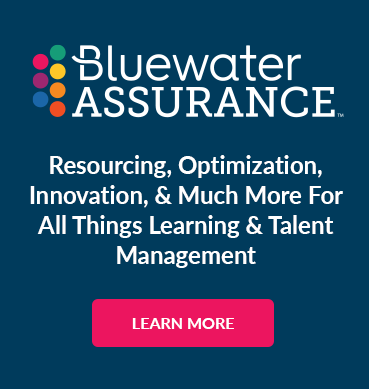Lifelong Learning: Why It Matters & How To Encourage It
by Jenny Campbell | February 27, 2019 11:33 AM | The Future of Learning

New and emerging technologies are changing the landscape of business and placing more importance on the skills workers need to survive automation. Employees recognize that they’ll need to continue learning in order to keep up with AI. As a result, people want to work for companies that support their learning and development.
What does lifelong learning look like in the workplace? It’s learning that is continuous and doesn’t end once the employee completes onboarding. By creating a culture that encourages lifelong learning you can engage your workers and create happier employees.
Workplace satisfaction is one benefit, but it’s not the only thing you stand to gain. By encouraging learning, you can reduce turnover and the costs that come with it.
LinkedIn’s 2018 Workforce Learning Report found that 93% of employees would stay at a company longer if it invested in their careers. Employees want opportunities to learn beyond the training they receive when they are hired. Companies that support learning can benefit by creating more knowledgeable employees which can increase performance and productivity.
How can you create a culture of lifelong learning at your organization?
Encourage Self-Directed Learning
A study by Deloitte found that 61% of executives report challenges in moving their organizations toward external self-directed learning. Support self-directed learning by giving your employees the freedom to explore what interests them. Encourage your team to take the time to learn and reward employees by recognizing those who make it a priority. Whether it's acknowledgment from management or tangible rewards like gift cards, come up with creative ways to show support for those who intentionally grow their skills. Ultimately, the goal is for learners to take ownership of their own development and become independent learners.
Provide Up to Date, Relevant Content
Lifelong learning is useless if the information that’s presented is inaccurate. Be realistic about the shelf life of your content. Best practices, processes, tools, and skills change constantly, so it’s important to update the content in your LMS regularly. Courses offered a year ago may no longer be relevant or accurate. Offer a library of internal and external content learners find useful. Employees may prefer to consume information differently so diversify the types of content offered. Above all, focus on content that’s relevant to your industry, organizational goals, and people.
Offer Microlearning
Microlearning involves delivering concise, context-sensitive training that is broken up into bite-sized pieces for easier consumption. LinkedIn recently reported that the number one challenge for talent development is getting employees to make time for learning. Employees want to learn but making time for a 2-hour course is much more difficult than making time for a 5-10-minute specific piece of learning. Microlearning allows you to deliver easily digestible content to your learners without removing them from their work for too long. If categorized and tagged correctly, it also makes it easier for them to find the specific topic they’re looking for.
Implement Mentorship Programs
The OSF model states that learning comes from a ratio of on-the-job, social, and formal sources. While the ratio varies per organization, each source is important. The senior members of your company serve as valuable resources for social learning. More seasoned workers have troves of on-the-job experiences to share with your newer hires. Having a mentor who can share their successes and failures is a great way to expand the learning of your newer employees. Mentorship can also help bridge the generational gap and build interpersonal skills.
Set Learning Goals
The beginning of the year is when people set resolutions and goals for the future. In addition to company goals, why not have managers work with their employees to set individual learning goals? By making it a company-wide activity, you can gain participation from those who don’t typically set goals. Setting goals in your LMS will enable you to track employees' progress and monitor their development. Provide structure and set S.M.A.R.T. goals that are Specific, Measurable, Attainable, Results-focused, and Time-focused.
Albert Einstein said, “once you stop learning you start dying.” The same is true for your career. By encouraging lifelong learning, you address employees' desire for growth and development. You create more knowledgeable and capable workers, which ultimately benefits your organization.
Bluewater provides a unique set of Custom Content Services that help you improve the links among knowledge, learning, and individual and organizational performance both within and, importantly, beyond the Learning organization.
Interested in learning more about Learning & Development?
Feel free to reach out to us directly!
Search Our Blogs
Categories
- Ad Hoc (1)
- ADMIN (1)
- administration (1)
- AI (2)
- analytics (2)
- anxiety (1)
- Artificial intelligence (2)
- automation (1)
- BI (1)
- blog (1)
- Blueprint (1)
- center of excellence (10)
- Communication (2)
- COVID-19 (2)
- Culture (1)
- Custom Content (1)
- customer service (1)
- Data (1)
- Employee Engagement (1)
- Shark Bites - Cornerstone Edition (12)
- Shark Bites - SumTotal Edition (4)
- Shark Bites - Ultimate Edition (5)
- The Future of Learning (16)
- The Future of Talent Management (30)
- User Experience (2)
- UX (2)
- wellbeing (1)

